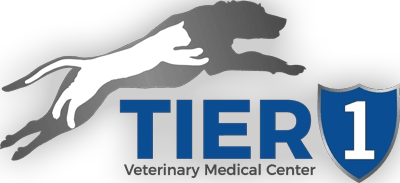Retrievers, collies, pointers, springers, shepherds, huskies, sled dogs, and many other breeds of working dogs were bred to do just that: work. Working breeds have accomplished amazing feats throughout history, from a team of sled dogs running 1000 miles on the Iditarod to military working dogs running 12-hour days in a blazing desert to apprehend terrorists or locate IEDs, saving countless lives. Even the hunting dog that waits patiently with single-minded focus by his master’s side to jump in and out of freezing water all day and bring back the bird are exceeding the norm.
These dogs are athletes. They have received extensive training and time investment on the part of their owners and handlers. It is an absolute privilege to watch these dogs perform. Now can you imagine an athlete capable of all of that, waiting patiently on the couch or in a kennel all week for a few hours of training or exercise a week?
Bred for a Purpose
Working breeds have specific attributes that were carefully chosen and selectively bred for fulfilling a job or purpose. If properly exercised and mentally stimulated, working dogs can be wonderful, loyal companions. However, it’s important to remember that generations of selective breeding didn’t culminate in a couch potato and occasional walking buddy. If a working dog’s needs for mental and physical exertion go unmet, they typically redirect into anxious, destructive, and sometimes aggressive behaviors. These behaviors commonly lead frustrated owners to seek help and land them in the office of a trainer, a veterinarian, or is some cases a shelter or rescue. I eagerly encourage you to seek professional consultations, but also ask yourself: what was my dog bred for? Answering that is the first step to helping your dog and yourself.
Managing Anxiety with Exercise
The first-tier choice for resolving anxiety or destructive behavior in a working dog is physical and mental exercise. I encourage you to seek out local clubs or training programs for your breed’s specialty: nose work, agility, schutzhund, fly ball, herding, upland or waterfowl hunting.
Let me be clear: I’m not saying you have to take up hunting or sheep herding (although I can recommend some local clubs if you’re interested). Rather, I urge you to find a challenge to stimulate your animal mentally with respect to generations of deeply engrained instinct. For instance, consider search and rescue or the easier cousin: hide and seek. Go outside in progressively larger areas with someone holding and blinding your dog while you run and hide yourself well. Do not call them. Just wait and give them lots of praise when they find you. You can also consider nose work, progressively more complex obedience, or extensive physical exercise, such as swimming or skijoring. Additionally, I recommend training them to run alongside a bike or ATV unless you’re a marathoner.
Is Medication the Answer?
Some of these dogs do have genuine anxiety or behavioral disorders. However, pursuing medical treatment before exhausting potential outlets such as exercise and mental stimulation provides a disservice to the animal. Far too many of my working dog patients that do not have jobs are out of control and wind up seeking treatment for anxiety, as well as other destructive behaviors.
Unfortunately, the most requested, albeit easiest solution for these undesirable behaviors is medication. As many as 8% of all dogs are on medications to control “anxiety” disorders. There are many combinations of nutraceuticals, supplements, and a myriad of medications in a veterinarian’s arsenal to manage anxiety. However, sometimes the most important part of treating a patient is knowing when not to prescribe medication. Before asking your veterinarian to medicate your dog into manageability, consider their blood, or rather their bloodlines. Generations of selective breeding for instinct, drive, and endurance cannot be overcome; they must be engaged.
Finding the Right Fit
People often misplace working dogs in a quiet home. Being conscious of the dog’s needs and working with their instincts will help them better fulfill your need for companionship. That being said, working dogs are not for everyone. These days, with family life and busy work schedules, it’s a challenge to get ourselves to the gym, let alone schedule regular meetings or excursions for our dogs. However, if you lead a life that’s too busy to invest time in working dog clubs, training, exercise, or other diversions, there are breeds I would recommend for you.
Do you need help engaging your dog, but aren’t sure how to go about it? Consider talking to your veterinarian about it. We can help direct you to a local trainer or club or help you devise an exercise and exertion program that is right for you and your dog.
Tier 1 Veterinary Medical Center in Palmer is Alaska’s only comprehensive animal hospital. We are available for emergencies, walk-ins, and by appointment. With CT, MRI, and Ultrasound available on-site, our facility provides advanced treatment options for your pet. Contact us today to schedule an appointment.
